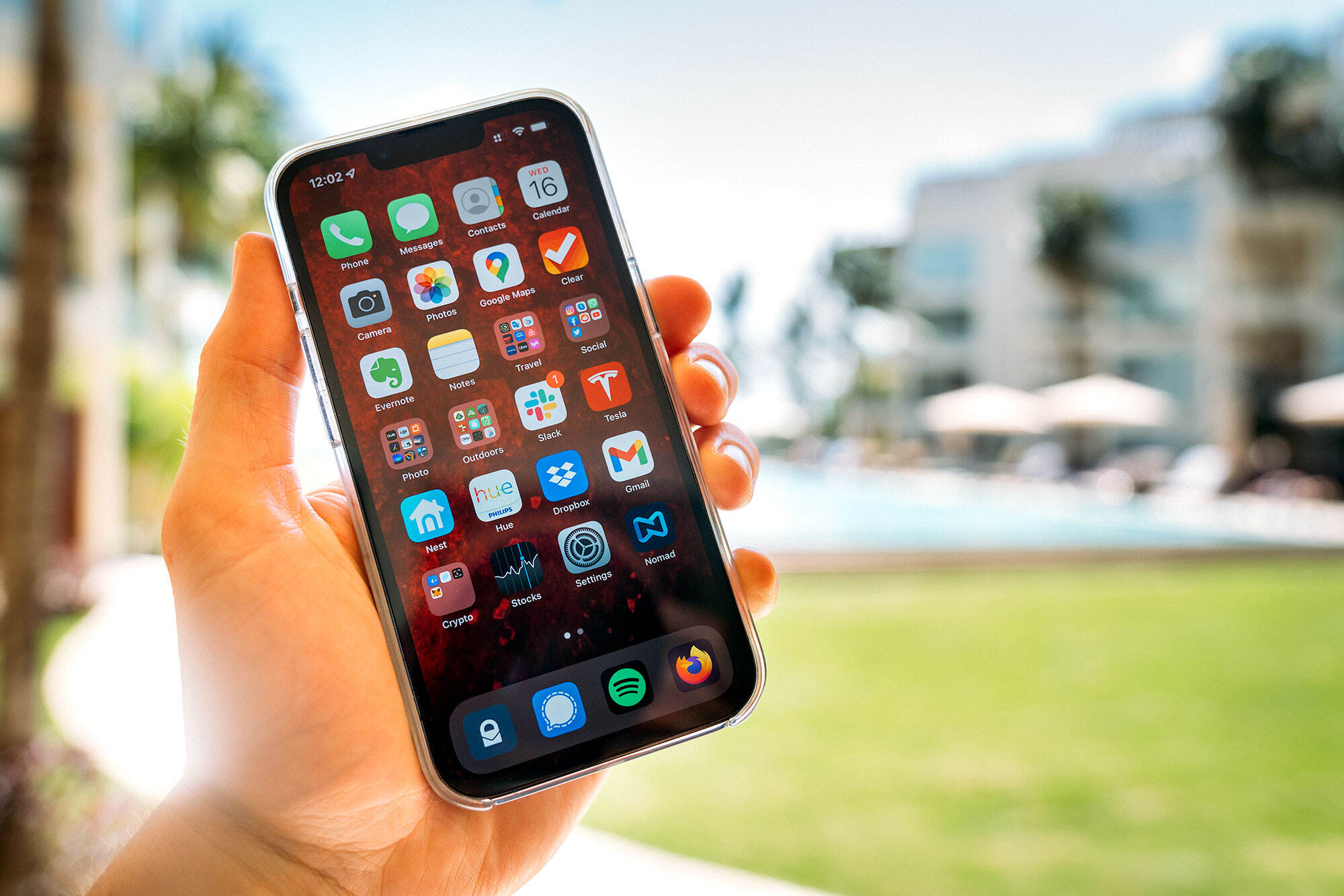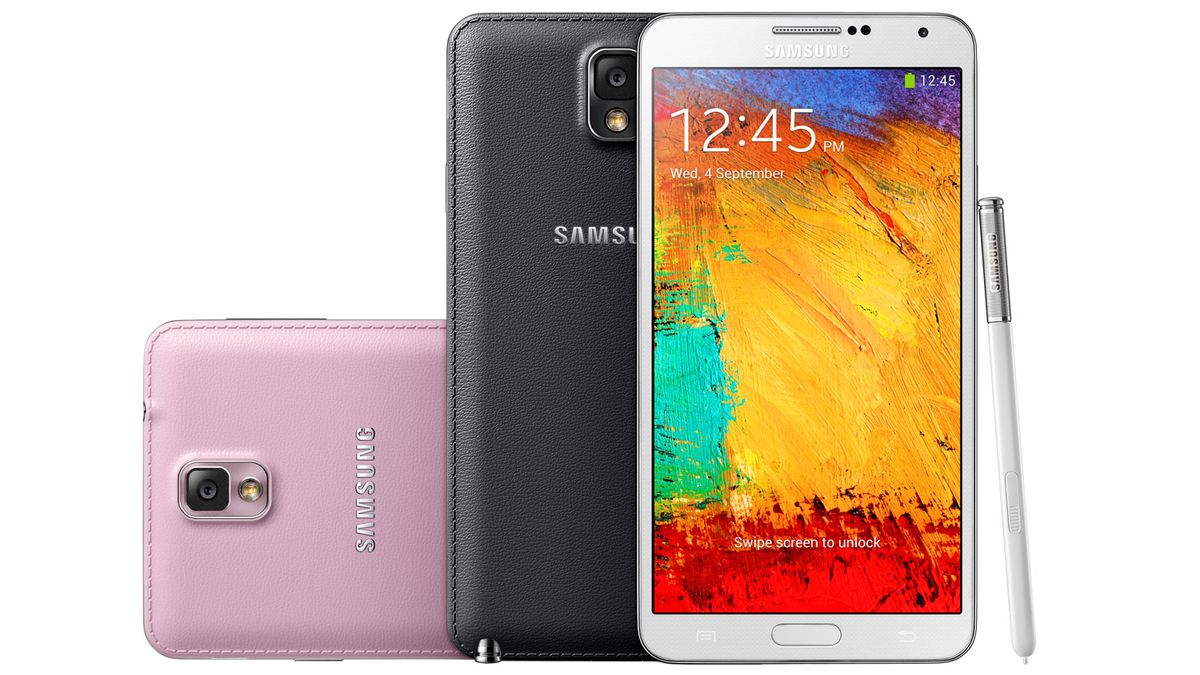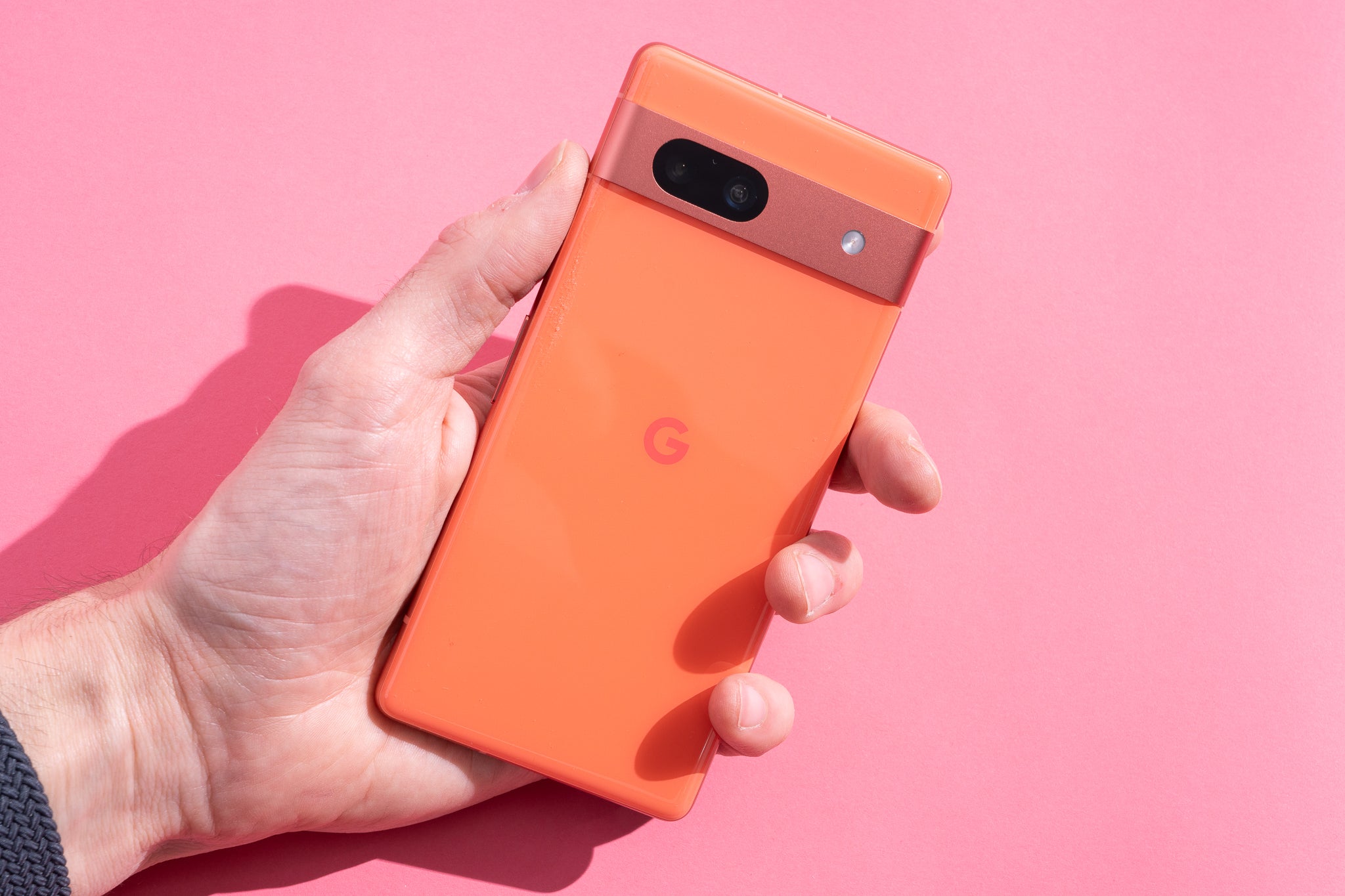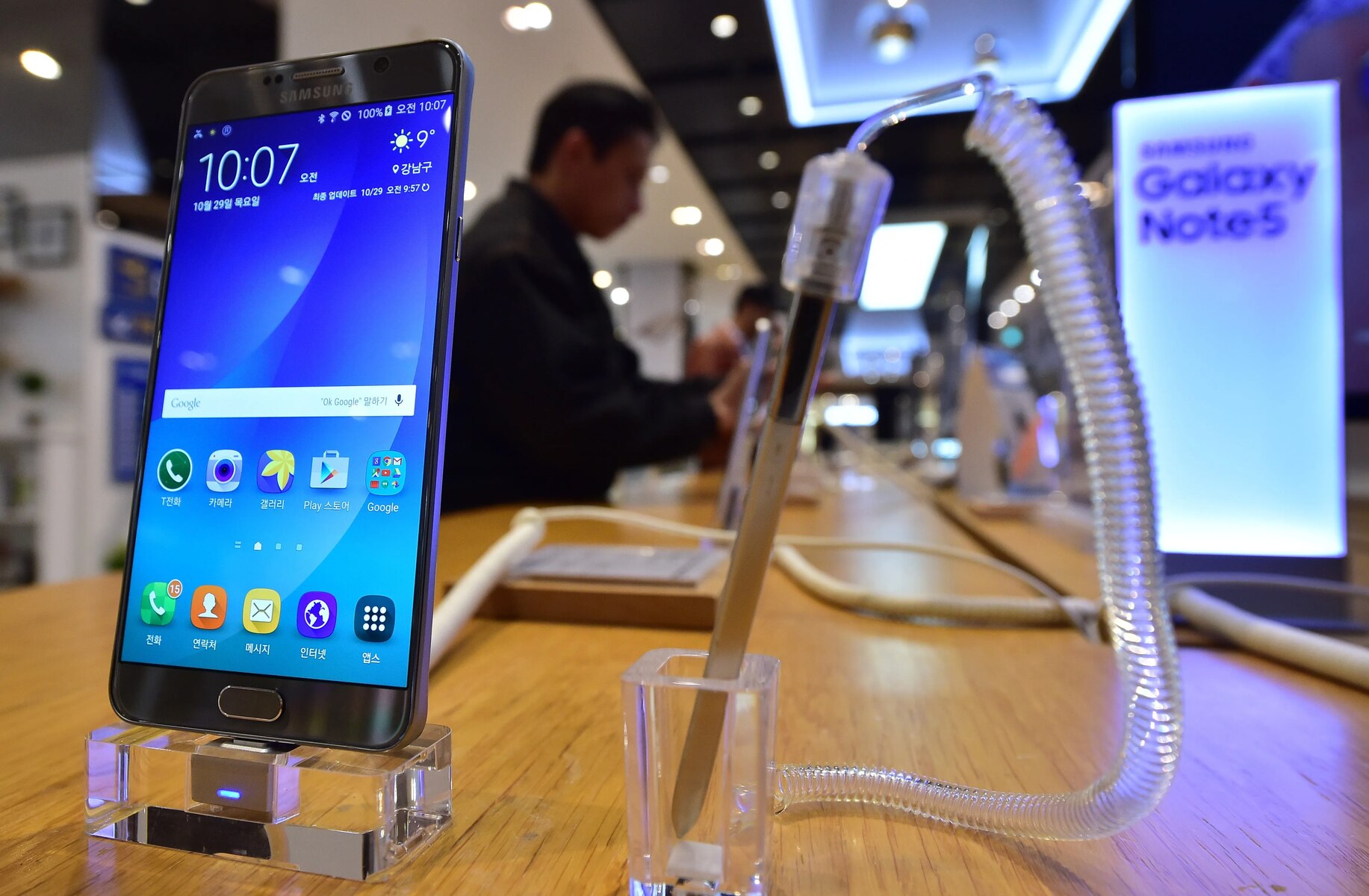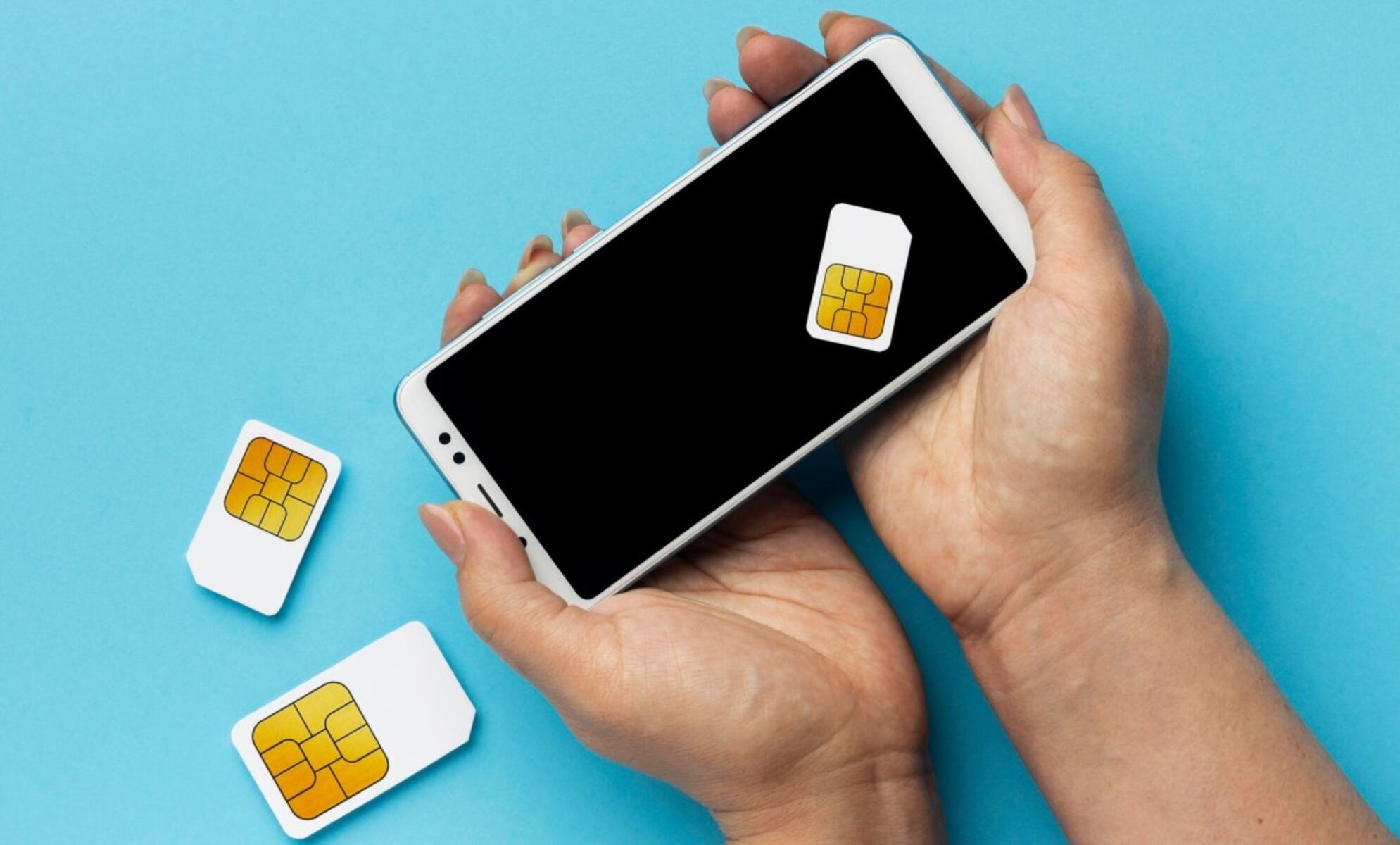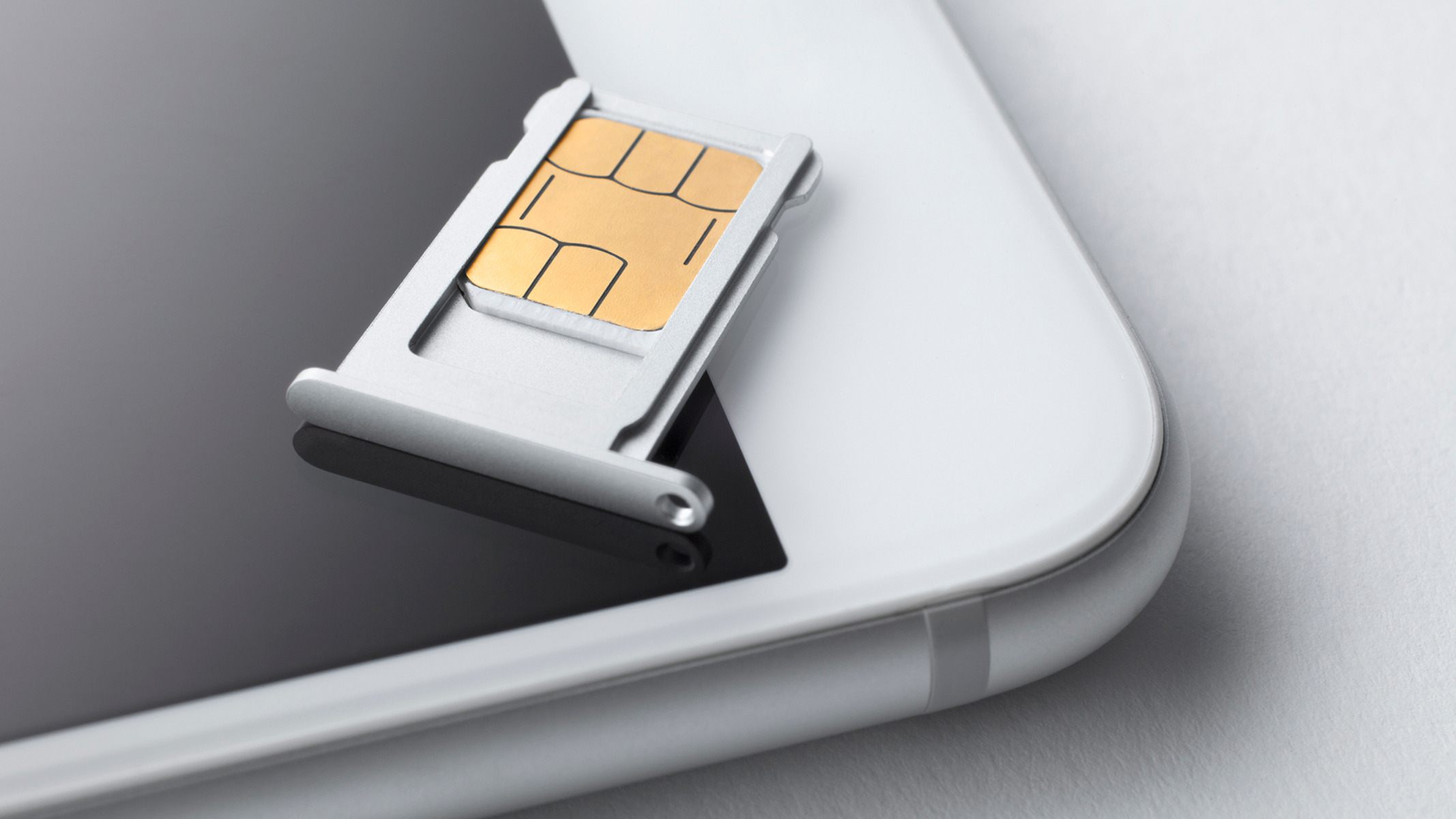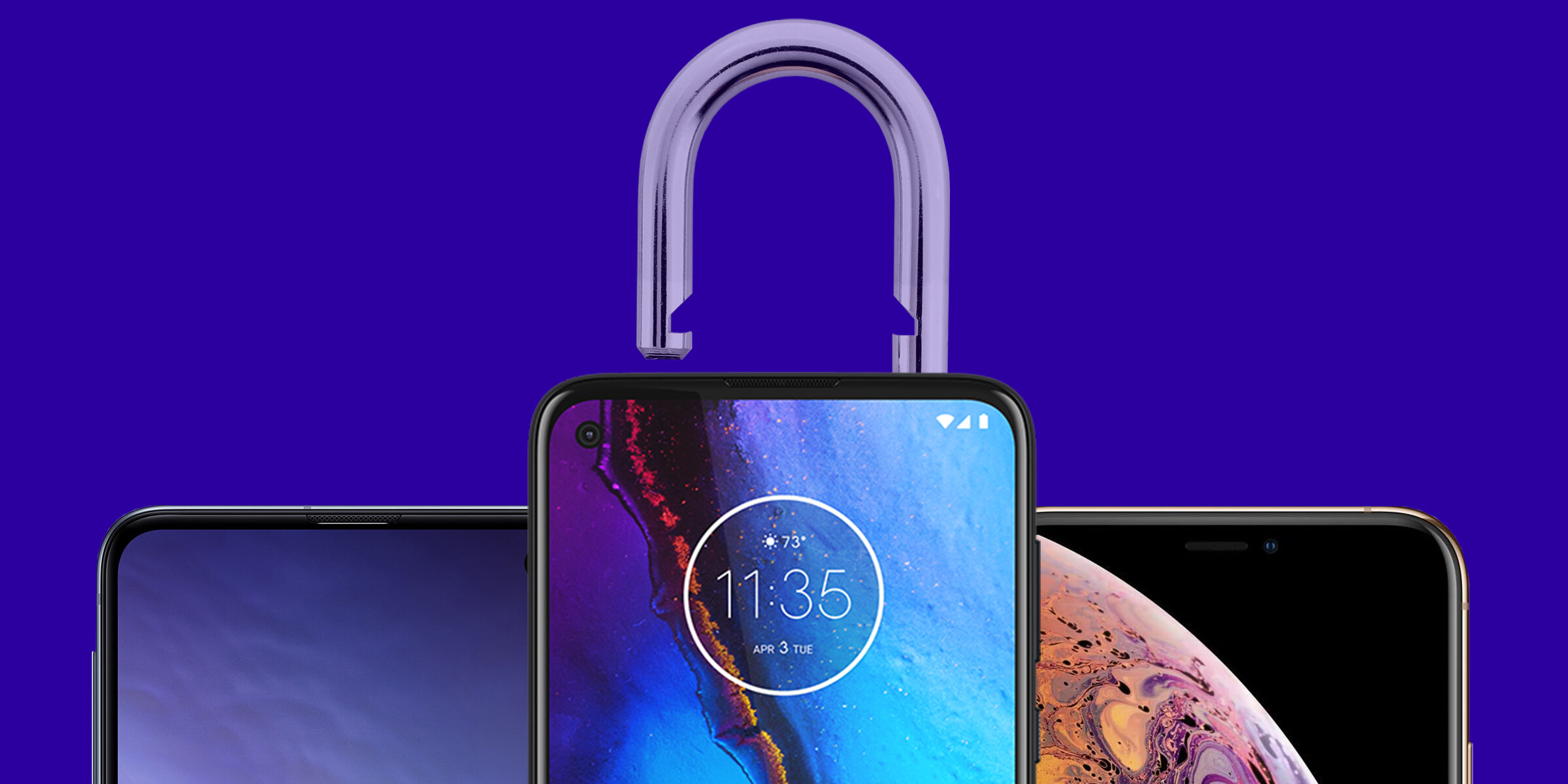Research and Preparation
When buying a used smartphone without a data plan, it’s important to conduct thorough research and make necessary preparations to ensure you get the best deal and avoid any potential issues. Here are some key steps to follow:
1. Determine your needs: Before starting the search for a used smartphone, assess your requirements. Consider factors such as the operating system (e.g., Android or iOS), desired features, storage capacity, and budget. This will help narrow down your options and make the selection process easier.
2. Research the market: Take the time to research the current smartphone market and familiarize yourself with the prices of different models. Look for reputable websites, forums, and social media groups where people discuss buying and selling used phones. This research will help you set a realistic budget and identify potential sellers.
3. Check the phone’s compatibility: Ensure that the used smartphone you plan to buy is compatible with the mobile network frequencies supported by your desired carrier. This information can usually be found on the manufacturer’s website or by contacting the carrier directly. Compatibility is crucial to ensure the phone will work properly without any compatibility issues.
4. Read user reviews: Look for reviews and feedback from others who have purchased the same model of smartphone. This will give you a better understanding of its performance, durability, and potential issues to watch out for. Reading user experiences can also help you make an informed decision and avoid buying a phone with known problems.
5. Verify the phone’s IMEI number: The International Mobile Equipment Identity (IMEI) number is a unique identifier for every mobile device. Before purchasing, verify the IMEI number to check if it has been reported as lost or stolen. You can do this by visiting websites or contacting your local law enforcement agency that offers such services. This step ensures you’re not buying a device with a questionable history.
6. Set a meeting place: If you’re buying the used smartphone from an individual seller, arrange a safe meeting place, preferably a public location, to inspect the phone and complete the transaction. Personal safety should always be a priority.
7. Prepare for negotiations: Be prepared to negotiate the price with the seller. Research similar listings and their prices to have a benchmark for your negotiations. Remember to consider the phone’s condition, age, and any accessories included in the deal.
By conducting thorough research and making necessary preparations, you can ensure a smooth process of buying a used smartphone without a data plan. This will help you find the right phone at a reasonable price, while also avoiding potential risks or issues that may arise with a used device.
Choose the Right Phone
When buying a used smartphone without a data plan, selecting the right phone is crucial to meet your specific needs and preferences. Here are some factors to consider:
1. Operating System: Determine whether you prefer the Android or iOS operating system. Each has its own unique features and interface, so choose the one that aligns with your preferences and comfort level.
2. Features and Specifications: Identify the features and specifications that are essential to you. Consider factors such as camera quality, battery life, processing power, display size, and storage capacity. Make a list of your priorities to help narrow down your options.
3. Age and Condition: Understand that used smartphones will have varying ages and conditions. If you’re comfortable with a slightly older model, you can often find good deals. However, be sure to check the phone’s overall condition, including the screen, buttons, and any signs of wear or damage.
4. Brand Reputation: Research the reputation of different smartphone brands. While popular brands may come with a higher price tag, they often offer better build quality, customer support, and a wider range of accessories.
5. User Reviews: Read user reviews for the specific model you’re considering. This will give you insight into the phone’s performance, reliability, and any common issues users have experienced. User reviews can be found on e-commerce websites, forums, and technology blogs.
6. Longevity and Future Updates: Consider whether the phone you’re interested in will receive future software updates. Newer software versions often bring improved features, security patches, and bug fixes. Look for phones that have a track record of receiving regular updates.
7. Compatibility: Ensure that the phone you choose is compatible with the necessary network bands of your desired carrier. This is especially important if you plan to use the phone with a different carrier or switch carriers in the future. Check the phone’s specifications or consult with the seller to confirm compatibility.
8. Budget: Set a budget based on your financial capabilities and stick to it. Research the market to get an idea of the prices for the phone you desire. With a used phone, you may be able to find a good balance between price and functionality.
By carefully considering these factors, you can choose a used smartphone that suits your needs, preferences, and budget. Taking the time to select the right phone will ensure a satisfactory experience in the long run, without compromising on the quality and functionality you desire.
Verify the Phone’s Condition
When buying a used smartphone without a data plan, it’s crucial to thoroughly assess the condition of the phone before making a purchase. Here are some steps to help you verify the phone’s condition:
1. Physical Inspection: Inspect the phone physically for any signs of damage or wear. Check the screen for scratches, cracks, or dead pixels. Examine the body of the phone for dents, scratches, or any other visible damage. Ensure that all buttons, ports, and connectors are functioning properly.
2. Software Check: Turn on the phone and navigate through the operating system to check for any software-related issues. Look out for any lag, freezing, or crashes that may indicate underlying problems. Verify that all basic functions such as making calls, texting, and accessing Wi-Fi are working smoothly.
3. Battery Health: Check the battery health of the phone. While some wear is normal, ensure that the battery still holds a decent charge and doesn’t drain quickly. You can use battery health apps or check the battery usage statistics in the phone’s settings.
4. IMEI/Serial Number: Verify that the IMEI (International Mobile Equipment Identity) or serial number of the phone matches the one provided by the seller. This helps to ensure that the phone hasn’t been tampered with or replaced with a stolen device.
5. Camera and Audio Quality: Test the camera and audio quality to ensure they are in good working condition. Take a few pictures using the front and rear cameras, and play audio or video files to check the speaker and headphone jack.
6. Network Connectivity: Check the network connectivity of the phone by inserting a SIM card and making a test call. Verify that the phone can connect to mobile data, Wi-Fi, and Bluetooth without any issues.
7. Check for Water Damage: Look for signs of water damage such as a red indicator in the SIM card slot or USB charging port. Water damage can cause serious issues with the phone’s functionality, so ensure that there are no visible signs of water damage.
8. Warranty and Return Policy: If possible, check if the phone comes with any remaining warranty or if the seller offers a return policy. This provides a safety net in case any unexpected issues arise after the purchase.
By thoroughly verifying the condition of the used smartphone, you can ensure that you’re getting a reliable device that will meet your needs. If possible, ask the seller questions about the phone’s history and maintenance to gain additional assurance about its condition.
Purchase from Reliable Sources
When buying a used smartphone without a data plan, it’s important to ensure that you purchase from reliable sources. Here are some tips for finding a trustworthy seller:
1. Established Retailers: Consider purchasing from established retailers, both online and offline, that specialize in selling used smartphones. These retailers often have strict quality control measures and return policies, providing you with more protection and accountability.
2. Certified Pre-Owned Programs: Look for certified pre-owned programs offered by manufacturers or authorized resellers. These programs ensure that the used smartphones have undergone thorough inspections, repairs (if needed), and come with a limited warranty.
3. Online Marketplaces: If you plan to buy from online marketplaces, such as eBay or Craigslist, exercise caution and do thorough research on the seller. Check their ratings, reviews, and past sales history. Look for sellers with a good reputation and positive feedback from previous customers.
4. Local Classifieds: Consider checking local classified ads or community websites for individuals selling their used smartphones. Meeting in person allows you to inspect the device before making the purchase. However, always prioritize your personal safety and arrange meetings in public places during daylight hours.
5. Referrals and Recommendations: Seek referrals and recommendations from friends, family, or colleagues who have previously bought used smartphones. Their personal experiences and suggestions can help you find reliable sellers or platforms to make your purchase.
6. Transparent Seller Descriptions: Look for sellers who provide detailed and accurate descriptions of the used smartphone’s condition, including any flaws or issues. Avoid sellers who provide vague or incomplete information, as this may indicate a lack of transparency.
7. Return Policies and Guarantees: Ensure that the seller offers a return policy or guarantee, allowing you to return the used smartphone within a specified period if it doesn’t meet your expectations or experiences unforeseen issues. Read and understand the terms and conditions of the return policy before making a purchase.
8. Price Comparison: Compare prices across different platforms or sellers to ensure that you’re getting a fair deal. Be cautious of prices that seem too good to be true, as they might indicate fraudulent activity or hidden issues with the phone.
9. Trust Your Instincts: Trust your instincts and avoid purchasing from sellers who make you feel uncomfortable or suspicious. If something doesn’t feel right, it’s better to explore other options and find a seller you feel confident in.
By purchasing from reliable sources, you can minimize the risks associated with buying a used smartphone without a data plan. Take the time to research and evaluate sellers or platforms to ensure that you’re making a secure and worthwhile investment.
Unlocking the Phone
If you are buying a used smartphone without a data plan, it’s important to ensure that the phone is unlocked. An unlocked phone allows you to use it with any compatible network carrier. Here are the steps to unlock a phone:
1. Check the Phone’s Unlock Status: Before purchasing, ask the seller if the phone is unlocked. Alternatively, you can check the phone’s unlock status by inserting a SIM card from a different carrier. If you can make calls and access mobile data without any issues, the phone is likely unlocked.
2. Contact the Original Carrier: If the phone is locked to a specific carrier, contact the carrier and inquire about their unlocking policies. Many carriers have specific guidelines or requirements such as completing the contract term, fully paying off the device, or meeting specific criteria to unlock the phone.
3. Third-Party Unlocking Services: If the original carrier is unwilling or unable to unlock the phone, consider using third-party unlocking services. There are various online services that can unlock your phone for a fee. However, be cautious and do thorough research to ensure the service provider is reputable and reliable.
4. DIY Unlocking: Some phone models can be unlocked through Do-It-Yourself (DIY) methods. By obtaining an unlock code specific to your phone model, you can follow the instructions provided by the manufacturer or online guides to unlock the phone yourself. However, this method may void any remaining warranty on the phone, so proceed with caution.
5. IMEI Unlocking: Another method to unlock a phone is by using the phone’s IMEI number. IMEI unlocking is considered the safest and most permanent method. Various online services offer IMEI unlocking. You will need to provide your phone’s IMEI number, which can usually be found in the phone’s settings or by dialing a specific code.
6. Confirm Successful Unlocking: After unlocking the phone, test it with a SIM card from a different carrier to ensure that it is indeed unlocked. Check for network connectivity, make calls, and access mobile data to confirm that the phone is fully unlocked.
If you encounter any issues during the unlocking process, contact the relevant customer support for assistance. Remember, unlocking a phone allows you the freedom to choose the carrier and plan that best suits your needs, offering greater flexibility and options when using a used smartphone without a data plan.
Choosing the Right Mobile Carrier
When buying a used smartphone without a data plan, selecting the right mobile carrier is essential to ensure reliable network coverage, affordable plans, and suitable features. Here are some factors to consider when choosing a mobile carrier:
1. Network Coverage: Evaluate the network coverage provided by different carriers in your area. Research coverage maps or ask friends and family about their experiences with different carriers. Ensure that the carrier you choose offers reliable signal strength and connectivity in the locations where you will be using your phone most frequently.
2. Plan Pricing and Features: Compare the pricing and features of different plans offered by various carriers. Consider factors such as the amount of talk, text, and data included, as well as any additional perks or benefits like international calling or data rollover. Ensure that the carrier’s plans align with your budget and usage requirements.
3. Prepaid vs. Postpaid: Decide whether you prefer a prepaid or postpaid plan. Prepaid plans offer flexibility and control over your usage without any long-term contracts. Postpaid plans typically require a monthly commitment but may offer additional benefits such as device financing options or premium features.
4. Compatibility with Device: Confirm that the carrier you choose is compatible with the GSM or CDMA network technology of your used smartphone. Verify this information with the carrier’s customer service or consult their website for a list of compatible devices. Compatibility is crucial to ensure that the phone will work seamlessly with the carrier’s network.
5. Customer Service and Support: Look for carriers that offer reliable customer service and support. Research reviews and ratings to gauge the quality of their customer service, and check if they provide multiple channels of support such as phone, email, and live chat. Prompt and helpful customer service can greatly enhance your overall experience with the carrier.
6. Contract Terms and Early Termination Fees: If you opt for a postpaid plan, carefully review the contract terms and conditions. Pay close attention to any early termination fees or penalties associated with canceling the plan before the agreed-upon contract duration. Understand the terms to avoid any unexpected charges if you decide to switch carriers in the future.
7. Family or Group Plans: If you intend to include multiple lines or family members on the same plan, explore carriers that offer family or group plans. These plans often provide cost savings and shared data allowances, making them a more economical option for households with multiple users.
8. Additional Services and Features: Consider any additional services or features offered by the carrier, such as mobile hotspot capability, international roaming, or value-added services like music or video streaming subscriptions. These extras can enhance your overall mobile experience and provide added value.
By considering these factors and conducting thorough research, you can choose a mobile carrier that best suits your needs and ensures a seamless and satisfying mobile experience with your used smartphone.
Activating the Phone
After purchasing a used smartphone without a data plan, the next step is to activate the phone with your chosen mobile carrier. Here’s a guide on how to activate your phone:
1. Gather Necessary Information: Collect all the information you will need to activate your phone, including your identification, billing address, social security number (if applicable), and any account numbers or PINs associated with your carrier account.
2. Choose a Plan: Select the plan that best suits your needs from your chosen mobile carrier. Depending on the carrier, you may be able to activate your phone and choose a plan online or through the carrier’s mobile app. Explore different plan options and consider data, voice, and messaging allowances as well as any additional features that may be beneficial to you.
3. SIM Card Activation: If your used smartphone requires a SIM card, ensure that it is inserted correctly before attempting to activate the phone. If you’re unsure about the SIM card type or placement, consult the phone’s user manual or the carrier’s website for guidance.
4. Online Activation: Many carriers offer online activation facilities. Visit the carrier’s website or mobile app and follow their step-by-step instructions to activate your phone. You may need to provide the device’s IMEI number and other necessary details during the online activation process.
5. Carrier Activation Phone Number: If online activation is not available or if you encounter any issues, contact the carrier’s customer service using the activation phone number provided by your carrier. A customer service representative will guide you through the activation process and ensure that your phone is successfully activated.
6. Follow Prompts and Instructions: Whether activating online or via phone, carefully follow the prompts and instructions provided by the carrier. These steps will vary depending on the carrier and the specific plans and services you have selected.
7. Test the Phone: Once the activation process is complete, test the phone to ensure that it is functioning correctly. Make a test call, send a text message, access mobile data, and test other features of the phone to ensure everything is working as expected.
8. Set Up Voicemail: If your carrier offers voicemail services, set up your voicemail by following the prompts provided. This will allow you to receive and manage voicemail messages.
By following these steps, you can successfully activate your used smartphone without a data plan and begin enjoying the features and services offered by your chosen mobile carrier. If you encounter any issues during the activation process, don’t hesitate to reach out to your carrier’s customer service for assistance.
Choosing a Suitable Prepaid Plan
When buying a used smartphone without a data plan, opting for a prepaid plan can provide flexibility and control over your mobile expenses. Here are some factors to consider when choosing a suitable prepaid plan:
1. Usage Needs: Assess your usage needs to determine the amount of talk time, text messaging, and data you require. Consider your typical usage patterns and select a plan that offers sufficient allowances for your needs. Look for options that allow you to customize and adjust your plan as your usage changes.
2. Data Allowance: Pay attention to the data allowances provided by different prepaid plans. If you use data-intensive services like streaming videos or downloading large files, ensure that the plan offers a generous data allowance for a reasonable price. Consider the option to add data packages or the availability of unlimited data plans if necessary.
3. Plan Duration: Prepaid plans typically have different durations, such as monthly, 90-day, or annual plans. Choose a plan duration that aligns with your usage frequency and budget. If you don’t use your phone frequently, a longer-duration plan may offer better value for money.
4. Cost and Budget: Evaluate the cost of the prepaid plan and ensure that it fits within your budget. Consider any additional fees or charges associated with activating the plan or adding extra services. Compare the prices of similar plans from different carriers to find the most cost-effective option.
5. Network Coverage: Verify that the prepaid plan you choose offers reliable network coverage in the areas you frequent the most. Check coverage maps provided by the carrier or inquire about coverage from friends or family who use the same network. A prepaid plan is only beneficial if it offers a strong and reliable signal where you need it most.
6. International Roaming: If you travel frequently or need to make international calls, consider prepaid plans that offer affordable international roaming or international calling options. Some plans may include free or discounted international texting or calling to select countries.
7. Customer Support and Account Management: Check the available customer support options provided by the carrier. Look for carriers that offer easy and convenient ways to manage your account, such as mobile apps or online account management portals. Prompt and helpful customer support can make your prepaid plan experience more smooth and satisfactory.
8. Additional Features: Consider any additional features that are important to you, such as mobile hotspot capability, multimedia messaging (MMS) support, visual voicemail, or data rollover. These features can enhance your overall prepaid plan experience and provide added convenience.
By considering these factors, you can choose a prepaid plan that aligns with your usage needs, budget, and specific requirements. Take the time to compare different plans from various carriers to find the most suitable prepaid option for your used smartphone without a data plan.
Managing Data Usage on a Wi-Fi Connection
When using a used smartphone without a data plan, one effective way to minimize data usage and save costs is by managing data usage on a Wi-Fi connection. Here are some tips for effectively managing data usage on Wi-Fi:
1. Connect to Trusted Wi-Fi Networks: Connect your smartphone to trusted Wi-Fi networks whenever possible. Use Wi-Fi at home, work, or public locations to take advantage of the internet connection without utilizing mobile data.
2. Set Wi-Fi as Default: Ensure that your smartphone is configured to automatically connect to known Wi-Fi networks. This setting will prioritize Wi-Fi over mobile data, saving your data usage when a Wi-Fi connection is available.
3. Monitor Data Usage: Keep track of your data usage to identify any excessive or unnecessary consumption. Most smartphones have built-in data usage monitoring tools in their settings. Set up data usage alerts or limits to receive notifications when you approach your set limits.
4. Utilize Wi-Fi for Downloads: When downloading large files, streaming movies, or updating apps, switch to a Wi-Fi connection instead of using your mobile data. This can significantly reduce data usage and prevent unexpected data overages.
5. Disable Automatic App Updates: Turn off automatic app updates or set them to update only over Wi-Fi. This ensures that your apps are updated but prevents them from using your mobile data in the background.
6. Limit Background Data: Restrict background data usage for certain apps or services that frequently consume data even when you’re not actively using them. You can adjust these settings in the app’s settings or in your smartphone’s data usage settings.
7. Optimize Streaming Quality: Adjust streaming quality settings for video streaming services, such as Netflix or YouTube, to a lower resolution or standard definition when on a mobile data connection. This reduces data consumption while still enjoying streaming content.
8. Download Music and Videos for Offline Use: Take advantage of apps that allow you to download your favorite music, podcasts, or videos for offline use. Downloaded content can be enjoyed without using any mobile data.
9. Utilize Web Browser Data Saving Modes: Many web browsers offer data saving modes that compress web pages, reduce image quality, and minimize data usage while browsing. Enable this feature in your browser settings to reduce data consumption.
10. Disable Wi-Fi Assist: On iPhones, disable the Wi-Fi Assist feature that automatically switches to cellular data when Wi-Fi signal strength is weak. This prevents unexpected data usage when a weak Wi-Fi connection is detected.
By implementing these strategies, you can effectively manage your data usage on a Wi-Fi connection and avoid excessive mobile data charges. Take advantage of Wi-Fi networks whenever possible, optimize your smartphone settings, and actively monitor your data usage to make the most of your used smartphone without a data plan.
Tips for Saving Data on a Smartphone
When using a smartphone without a data plan, it’s important to save data to avoid overages or unexpectedly high costs. Here are some tips to help you save data on your smartphone:
1. Monitor Data Usage: Keep track of your data usage regularly. Most smartphones have built-in data monitoring tools that allow you to set limits and receive notifications when you approach your threshold. Monitoring your data usage helps you stay aware of your consumption and make necessary adjustments.
2. Connect to Wi-Fi Networks: Utilize Wi-Fi networks whenever available. Connect to trusted and secure Wi-Fi networks, such as those at home, work, or public areas, to take advantage of the internet connection without using your mobile data.
3. Disable Background App Refresh: Turn off or limit background app refresh. This feature allows apps to update and fetch data in the background, consuming data even when you’re not actively using them. Disabling or limiting this feature can significantly reduce data usage.
4. Limit Video Streaming Quality: Adjust the video streaming quality on platforms like YouTube or Netflix to a lower resolution when using mobile data. Lower quality streaming reduces data consumption while still allowing you to enjoy content on the go.
5. Use Data-Saving Browser Modes: Utilize data-saving modes in web browsers. Many browsers offer data compression modes that minimize image quality and compress web pages, reducing data usage while browsing the internet.
6. Disable Auto-Play for Videos: Disable auto-play for videos on social media apps. Auto-play can quickly consume data as videos automatically start playing. Change the settings to manually play videos to control when data is used for video playback.
7. Compress or Resize Images: Before sending or uploading images, consider compressing or resizing them to reduce file size. There are various image compression apps available that can help you maintain image quality while lowering data usage.
8. Limit Syncing and Cloud Backup: Be mindful of apps that sync or back up data in real-time. While syncing is important for certain apps, it can consume data. Choose to sync less frequently or limit it to Wi-Fi-only to save data.
9. Utilize offline features: Take advantage of apps that offer offline modes. Many music streaming apps, for example, allow you to download songs or playlists for offline listening. This eliminates the need to stream music using mobile data.
10. Update Apps Over Wi-Fi: Set your smartphone to update apps only over Wi-Fi. App updates can be large and consume significant data. By limiting updates to Wi-Fi, you can avoid using your mobile data for this purpose.
By implementing these tips, you can effectively save data on your smartphone without a data plan. Conserving data not only helps you avoid additional costs but also ensures that you can enjoy using your smartphone without worrying about data limitations.
How to Avoid Unwanted Charges
When using a smartphone without a data plan, it’s important to avoid unwanted charges that can increase your expenses. Here are some tips to help you avoid these unexpected charges:
1. Disable Data Roaming: Turn off data roaming on your smartphone to avoid incurring charges when traveling internationally. Data roaming can be expensive, so make sure to disable it in your device settings.
2. Beware of Automatic App Updates: Disable automatic app updates or set them to update only over Wi-Fi. App updates can consume significant data, so it’s best to control when and how they are downloaded to avoid unwanted charges.
3. Restrict Background Data Usage: Limit background data usage for certain apps in your smartphone’s settings. Some apps consume data in the background even when you’re not actively using them. Restricting this usage can help reduce your data consumption and prevent unwanted charges.
4. Be Cautious with Streaming Services: Streaming music and video services can quickly consume data. Be mindful of your usage and consider downloading content for offline use whenever possible to avoid data streaming charges.
5. Disable Mobile Data Usage for Specific Apps: Review the data usage settings for individual apps on your smartphone and disable mobile data usage for apps that you don’t need to access when you’re not connected to Wi-Fi. This prevents these apps from using your mobile data and potentially incurring charges.
6. Monitor Roaming Usage: If you’re going to be in an area with limited or no Wi-Fi access, be cautious when using your smartphone’s mobile data. Keep an eye on your data usage to avoid exceeding any limits or incurring additional charges while roaming.
7. Use Wi-Fi Calling and Messaging: Take advantage of Wi-Fi calling and messaging services to avoid using your mobile network for calls and texts. Many smartphones offer this feature, allowing you to make calls and send messages over a Wi-Fi connection instead of using mobile data.
8. Consider Data-Saving Modes: Check if your smartphone has built-in data-saving modes or features. These modes can help optimize your data usage by compressing data or restricting certain activities that consume a lot of data.
9. Review Carrier Policies and Guidelines: Familiarize yourself with your carrier’s policies and guidelines regarding data usage and potential charges. Understanding these policies can help you make informed decisions and avoid any unforeseen charges.
10. Regularly Check Your Account and Bills: Keep an eye on your monthly bills and account details provided by your carrier. Regularly review your usage and verify that there are no unexpected or erroneous charges. If you notice any discrepancies, contact your carrier’s customer service to resolve the issue.
By following these tips, you can minimize the risk of incurring unwanted charges and manage your expenses effectively when using a smartphone without a data plan. Staying vigilant and being mindful of your data usage will help you avoid any unwelcome surprises on your bill.
Troubleshooting Common Issues
When using a used smartphone without a data plan, you may encounter common issues that can affect your device’s performance. Here are some troubleshooting tips to help you resolve these issues:
1. Slow Performance: If your smartphone is experiencing slow performance, try closing unnecessary apps running in the background and clearing cache memory. Consider uninstalling unused apps or performing a factory reset to improve overall performance.
2. Battery Drain: If your phone’s battery drains quickly, check for power-hungry apps running in the background. Adjust settings to optimize battery usage, such as reducing screen brightness, disabling push email, or enabling power-saving mode. Consider replacing the battery if it is old or no longer holds a charge.
3. Connectivity Issues: If you’re experiencing connectivity issues, such as Wi-Fi or Bluetooth not working properly, try restarting your phone and ensuring that the respective features are enabled in the settings. If the problem persists, check for software updates or perform a network reset.
4. App Crashes: If certain apps crash frequently, make sure they are updated to the latest version. Clear the app cache or reinstall the app if necessary. If the issue persists, check if other users are experiencing similar problems and contact the app developer for assistance.
5. No Signal or Network Connection: If you’re unable to get a signal or connect to a network, check if the SIM card is inserted properly and that the phone is unlocked and compatible with your carrier’s network frequencies. If the problem persists, contact your carrier for assistance.
6. Storage Issues: If your phone’s storage is full or nearly full, delete unnecessary files, photos, or apps to free up space. Consider using cloud storage solutions or transferring files to an external storage device to optimize storage capacity.
7. Frozen or Unresponsive Screen: If your phone’s screen becomes frozen or unresponsive, try performing a soft reset by holding the power button for a few seconds. If that doesn’t work, perform a hard reset by holding the power and volume-down buttons simultaneously. This will restart the phone and resolve minor software glitches.
8. Overheating: If your phone is overheating, ensure that it is not exposed to extreme temperatures or direct sunlight. Remove any protective case that may be trapping heat. If the issue persists, check for apps or processes running in the background that may be causing excessive CPU usage, and consider performing a factory reset if necessary.
9. Audio or Speaker Issues: If you’re experiencing problems with audio or the speaker, check the volume levels and ensure that the sound is not muted. Clean the speaker grille to remove any debris or dust that may be obstructing sound output. If the issue persists, contact a professional for repair or seek assistance from the manufacturer.
10. Poor Camera Quality: If your phone’s camera quality is poor, clean the camera lens to remove any smudges or fingerprints. Check the camera settings and adjust them for optimal picture quality. If the issue persists, consider contacting the manufacturer or seeking assistance from a professional.
By troubleshooting common issues, you can resolve problems and improve the performance of your used smartphone without a data plan. If the issue persists or if you are unsure how to address a specific problem, consult the manufacturer’s support documentation or contact their customer service for further assistance.
Conclusion
Buying a used smartphone without a data plan can be a cost-effective way to own a high-quality device while avoiding the commitments and expenses of a traditional plan. By following the steps outlined in this guide, you can navigate the process with confidence and make informed decisions.
Research and preparation are key when embarking on your journey to purchase a used smartphone. Determine your needs, research the market, and verify the phone’s condition to ensure you find the right device. Purchase from reliable sources, unlock the phone if necessary, and choose a suitable mobile carrier that offers the right plan options and coverage.
Activating the phone and selecting a prepaid plan that aligns with your usage requirements and budget is essential. Managing data usage on a Wi-Fi connection and implementing tips for saving data helps you minimize costs and avoid overages. Avoiding unwanted charges and troubleshooting common issues will further enhance your experience with the used smartphone.
Remember, while buying a used smartphone without a data plan can be a great way to save money, it’s important to stay informed and make choices that suit your individual needs. Keeping up with device maintenance, staying vigilant about security, and seeking assistance when needed will ensure that your used smartphone continues to serve you well.
By following these guidelines and being mindful of the tips and steps provided, you can navigate the process of buying and using a used smartphone without a data plan successfully and enjoy the benefits of a quality device without breaking the bank.







